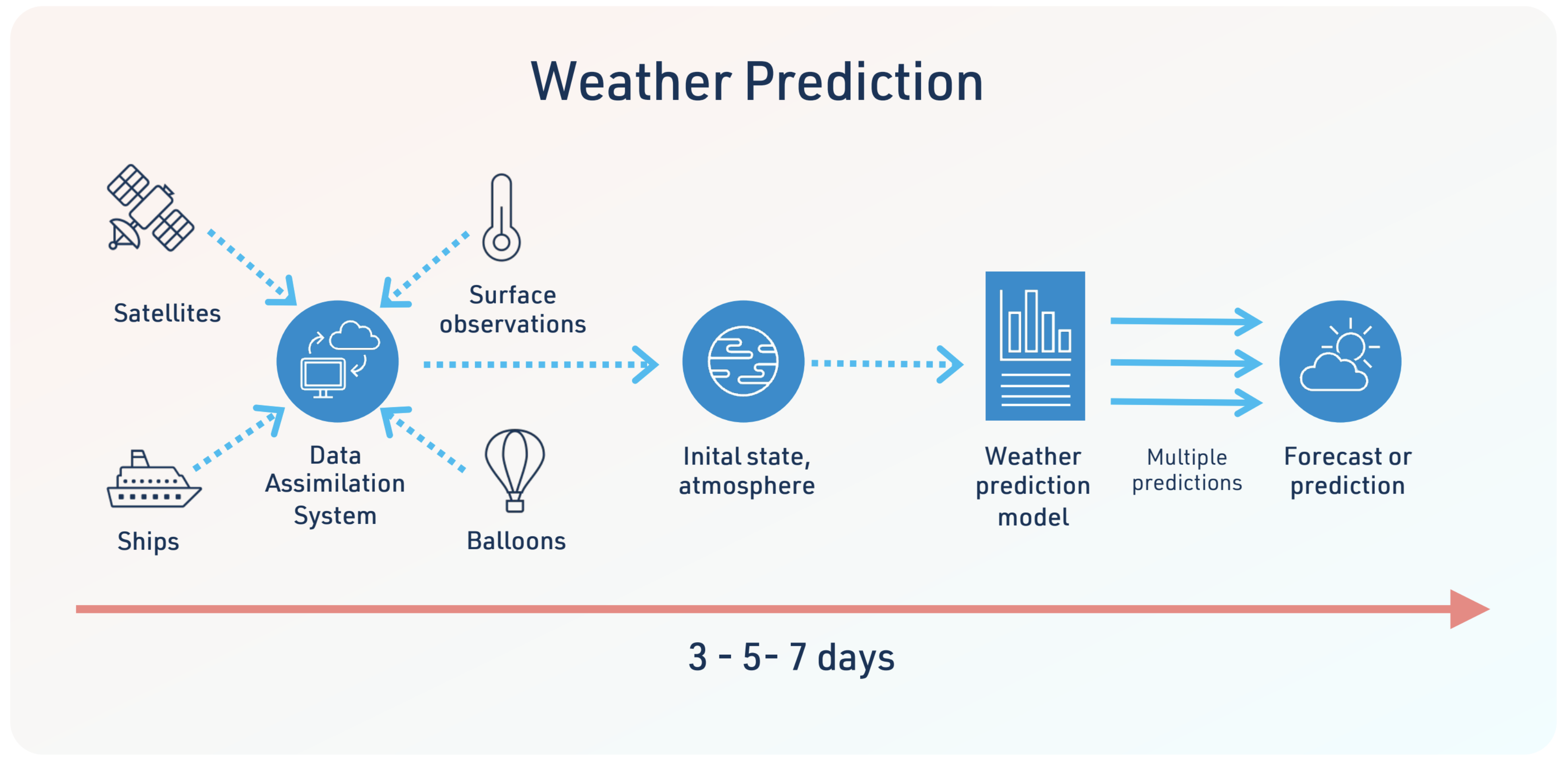A Weather Forecast Model is used to forecast the weather of tomorrow, or a few days into the future.

The model uses detailed information from satellites, surface observations, aircraft and ships to produce the best possible knowledge of the atmosphere, ocean and land.

The basic workflow for a weather prediction model
These observations are brought together in the form of an initial state for the model and this initial state is evolved forward in time on a large computer system for a number of days. One of the important advances in the last decade is that it is common to modify the initial state (based on uncertainty for example) and re-run the weather forecast. Ideally, this is done many times to help determine how confident we should be about a weather forecast.
This use of an observed initial state makes weather forecasting a prediction.
The goal is an accurate prediction of what will happen to the weather over the next few days for specific places, and it matters if a heavy rainfall event is correctly predicted on day 3 of a forecast, or incorrectly forecast on day 4.
The quality of a weather forecast degrades over time because we cannot know the initial state perfectly, and there are always errors in how our models represent processes. There is little predictive skill in weather forecasts beyond about 10 days. However, the skill in weather forecasting has improved over time and generally weather forecasts are skilful on timescales of 3-5 days.
Climate model stakeholder
How do you choose the right climate model?
What does climate model resolution mean?
